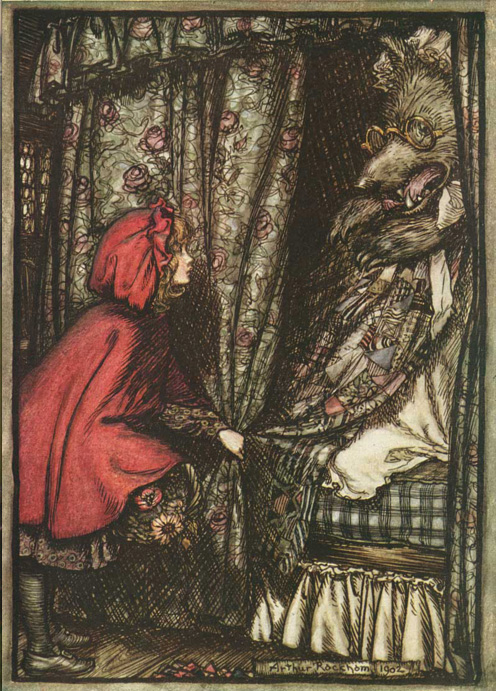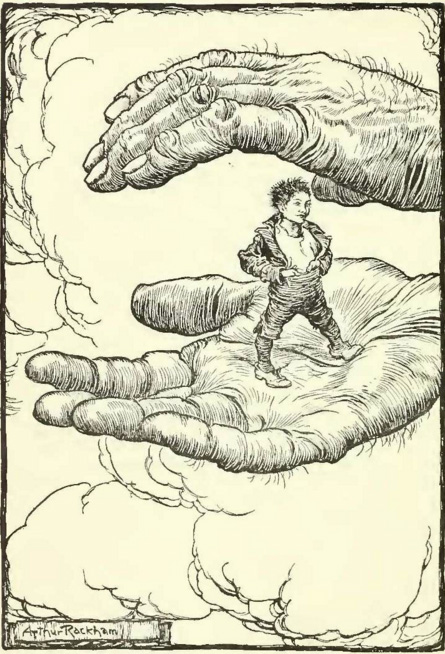Welcome to our blog series on innovative projects coming out of The Edge! The Edge is a collaborative space in Bostock Library where students, faculty, and staff can work on research projects over the course of a semester or academic year. If think you have a project that would be ideal for the Edge, head over to our project spaces page to apply.
The Project: Fairy Tales, from Grimms to Disney
Fairy Tales, from Grimms to Disney is a digital library of 210 Grimms Fairy Tales in English translation, ordered by number and themes. The team built this digital library in WordPress to support the lecture course “Fairy Tales: Grimms to Disney” (Professor Jakob Norberg, Department of German), and students use the WordPress site to blog about weekly readings. Heidi Madden, Librarian for Western European Studies and Medieval Literature, answered some questions for us about this project.
What inspired this project?

The Fairy Tales course is a popular lecture course taught every year in the German Department by Professor Jakob Norberg. The project arose in conversation with Professor Norberg, who wanted to draw on the visual elements of fairy tales to inspire students to read widely. He also wanted to make the large course more interactive. Students discover and write about modern versions of fairy tales; they find a wide variety—with many international examples—of tales based on Grimm fairy tale characters, themes, and plots. Professor Norberg wanted to capture some of that information from one year to the next by having students contribute their ideas to a blog.
Who are the members of your team? What departments and schools are they part of?
- Professor Jakob Norberg, Department of German
- Heidi Madden, Duke University Libraries
- Nele Fritz is a Library Science student (B.A.) at TH Köln – University of Technology, Arts and Sciences, Cologne, Germany. From September 2015 to March 2016 she worked as an intern in International and Area Studies and in Research Services at Duke University Libraries.
- Liz Milewics and Will Shaw as Digital Scholarship consultants
How has working in The Edge influenced your team?
The Edge space was an ideal central meeting place for the team. The most important affordances of the project room were the display screen and the writable walls. The site has many pages and images, and we needed room to sketch and evaluate the site. It was also useful to have a large table, so that we could work together on tasks where we needed immediate feedback. Having the project room available to us two afternoons a week really helped with keeping us on schedule.

What tools do you use to work collaboratively?
We used WordPress, SAKAI, Basecamp, and Photoshop. Many students in the course are in engineering and computer science, and they have explored research involving text-mining and other digital tools for students to work with text data and images. Professor Norberg wanted his class site to list examples of that type of research as inspiration for students who take the class in the future. Having those clean text files readily available on the site allows for mobile reading, but also for downloading text data for projects.
What are you learning as part of this project that is surprising to you?
WordPress can be surprisingly difficult when building multimedia content and when building it with many pages. That’s why planning and sketching out the whole site is very important. Getting an overview of what the plug-ins offer is time-consuming. However, once the project was running, Professor Norberg was delighted to get to know his 43 students through their blogs very quickly.

What are the difficult problems you are trying to solve?
When the spring course is over, we want to turn the course site into a public site, so students interested in the course can explore the website. We also want to use the public website to showcase some of the original and tech-savvy research students are doing. In addition to that, we want to retain the bibliography of Grimm version fairy tales that students bring to the course from all of their diverse backgrounds.
What would you do with your project if you had unlimited resources?
We want the site to be used in teaching beyond Duke.
Final Thoughts
Nele Fritz, a graduate student from Germany, worked on this project as part of her field experience. Besides planning, sketching and building the site, this experience also included getting to know WordPress very well and monitoring the project with project management tools and strategies.
This post was written and compiled by Hannah Pope, a Master’s of Library Science student at UNC-Chapel Hill. She is interested in instruction, helping with research, and encouraging student innovation in libraries. She is currently working as a field experience intern in the Assessment and User Experience department and with The Edge at the Duke University Libraries.


